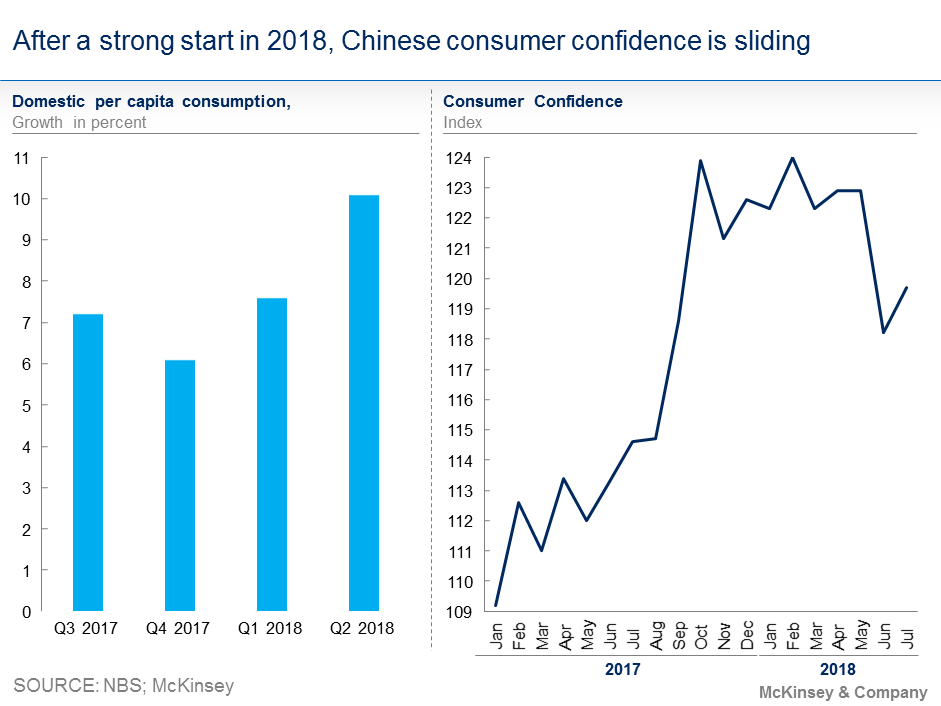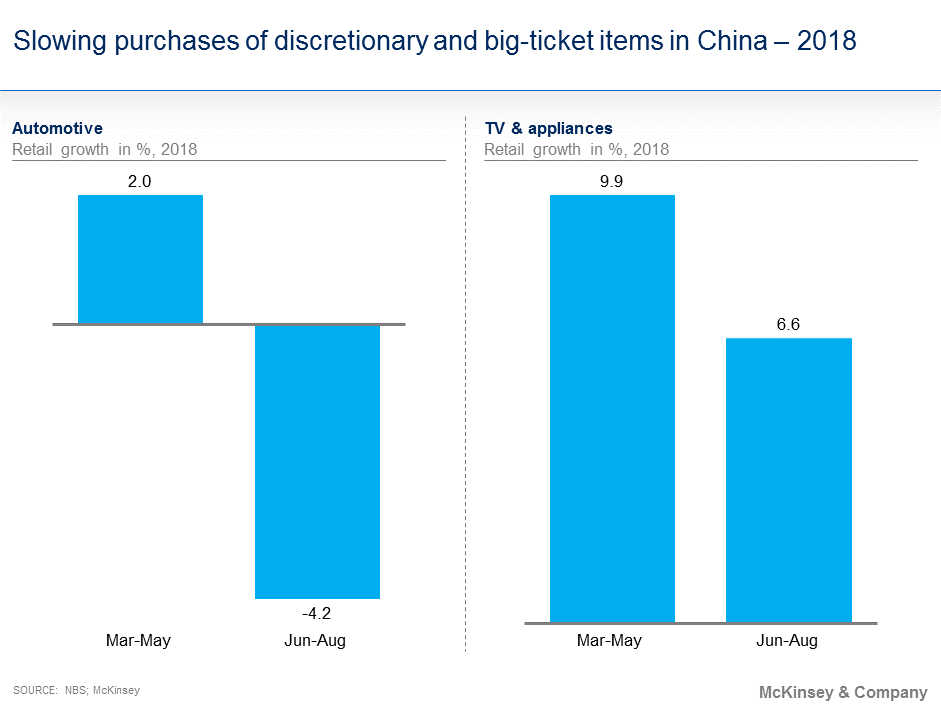The trade war between the US and China is casting a long shadow over the prospects for the Chinese economy. With China’s gradual shift from an investment-led to a consumption-driven economy, all eyes are on the Chinese consumer as the primary engine of growth. Are they still confident? Are they still spending? Can they power China through these turbulent times?
These are just some of the questions I get asked by clients and experts here on the ground in China. I won’t attempt to answer these questions in this short post. Instead, let me share a few facts about some of the changes in consumption that are already underway, and what this could tell us about the future.
In the first six months of the year, domestic consumption powered ahead at a very healthy 8.8 percent, higher even than last year’s 7.1 percent. Fueling this surge is the rise of China’s middle class, which make up 40 percent of urban households today, and which are expected to grow to two-thirds of all consumers by 2025.
Consumer confidence surged to a 10-year high in February, and has remained fairly high despite dropping in recent months.

So, all is good with the Chinese consumer, right? Well, not exactly. A quick look at a few key indicators actually reveals a slow-down in consumption since June.
One of the most salient indicators of a slow-down can be seen in sales of new cars, which grew by 2 percent in the three-month period from March through May, and then shrunk by 4 percent between June and August. This was the first decline in new car sales in 17 years.

Consumers are anxious about the economy. A trade war is looming, the value of the RMB is dropping, and the cost of living is rising. Consumers have been taking on higher levels of household debt. In fact, China’s household debt now exceeds annual disposable income, and is now at a level that is higher than in the US.
These are the likely reasons behind the drop in new car sales and the cooling of consumption that we’ve seen in recent months. In just the last few months, sales of discretionary items like cosmetics, and purchases of big-ticket items like appliances, have slowed substantially.
Net-net, it looks like the rest of 2018 may fall short of the strong start we witnessed in the first half of the year. While I continue to believe the long-term economic fundamentals will remain strong, many consumer companies in China may be facing a slow-down in top-line growth in the near term.
China’s much-anticipated “Singles Day” event, the 24-hour online shopping bonanza which lands on November 11th every year, may shed some more light on consumers’ willingness to spend, and how companies will react to the slow-down with unique and discounted offers.
Slowing consumption in China is not just a “China problem,” either. As the second-largest economy in the world, and one that is deeply intertwined with the rest of the global economy, what happens in China doesn’t just stay in China.
